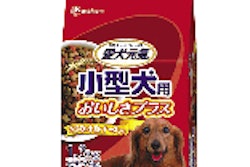
US petfood exports declined in the early part of this decade. The drop was due primarily to US petfood manufacturers building more plants around the world, especially in Europe, rather than cope with European Union import regulations.
Now, because of changing attitudes toward pets and increased demand for high-value petfoods, US petfood exports are rebounding. Following are profiles of the leading importers of US petfoods. The US$ amount after the country name is the value of US-made petfood imported in fiscal year 2006.
Canada: US$375.5 mil.
As in the US, Canadian trends in human health and nutrition are mirrored in petfood. In the dog and cat food and other petfood sectors, value sales are expected to continue to outpace volume sales. Retail sales are being driven by value-added products. When consumers are deciding on petfood purchases, they often look for many of the same attributes that they would look for in human foods.
Consumers are bombarded from all areas with information on the importance of pet ownership and care. Hence, pet owners are feeling an increased responsibility for their pets' overall health and nutrition, notes Euromonitor.
Japan: US$234.6 mil.
The number of small dogs and older pets is continuing to increase in Japan. Classification of petfood by size and age is becoming more pronounced; manufacturers tend to specialize when developing new products. In response to the growing popularity of small breeds, for example, Mars offers products for Miniature Dachshunds, Shih Tzus, Chihuahuas, Toy Poodles and Papillons. The leaders in functional petfoods are foreign brands such as Pedigree and Hill's Science Diet.
In Japan, young people are tending to delay marriage and often turn to pets as surrogate family members. Many elderly people are living alone and often have pets as friends. These factors are expected to grow petfood sales.
Mexico: US$93.1 mil.
Petfood sales in Mexico are showing promising signs of continuous growth. The constant investment of major players in the industry is paying off. The growth is coming from an increased awareness of the benefits of providing a balanced diet and well-being to pets and more disposable income of pet owners.
According to Euromonitor, Nestlé México has shifted course to concentrate on sales of premium brands, generating good returns. Iams de México reigns in premium petfood, and there is no indication that the company plans to change its strategy to serve mid-priced markets already catered to by Effem México and MaltaCleyton.
Australia: US$42.2 mil.
A number of social and demographic trends are affecting the petfood industry in Australia. Urban consolidation is resulting in smaller garden areas and more people living in apartments and townhouses. This has led to Australians increasingly preferring pets that require less space, such as smaller dogs, birds or fish. Another important change is the average age of Australian first-time mothers, which is reaching 30. As couples delay starting families, some of the energy and resources that could have been spent on children are being transferred to pets.
Belgium: US$25.0 mil.
Belgian consumers are not only trying to become healthier themselves, they are also paying more attention to their pets' health. Premium products continue to sustain their popularity among Belgian pet owners, mainly due to strong marketing, notes Euromonitor.
Cat food sales continue to be higher than dog food sales due to the higher cat population in Belgium. The main manufacturers of dog and cat food continue to be Masterfoods and Nestlé Purina PetCare. In 2004, these two players accounted for 52% of value sales, followed by private label with a 25% share.
Taiwan: US$23.9 mil.
Petfood value sales growth is benefiting from expansion of distribution outlets. There has been a rapid expansion of franchised pet stores and superstores. Petfood sales are expected to achieve healthy growth over the next four years in both constant value and volume terms.
Growth will mainly be due to the optimistic economic outlook, which should see consumers willing to spend more on their pets. A growing product range is also expected to boost demand. Ownership of cats and fish is expected to increase more than dog ownership, predicts Euromonitor.
Korea: US$20.2 mil.
Dogs were traditionally viewed as livestock in South Korea. Also, the country has been notorious for its dog-eating culture, although the nation has started to take more of an interest in dogs as pets in recent years as a result of pet-related programs on television. Euromonitor predicts the trend toward keeping pets will rapidly expand over the next four years. Dog owners are increasingly feeding their pets the best dry dog food available.
New Zealand: US$18.0 mil.
The underlying trend in New Zealand cat and dog food is toward greater sophistication, with a move toward better-quality products. While wet cat and dog food remain the dominant type, dry cat and dog food have become more popular. Euromonitor notes that New Zealand's petfood market has witnessed further segmentation, such as products specifically formulated for different breeds, overweight pets and urban and rural pets. Although the pet population is expected to remain largely unchanged, further growth opportunities are expected from underdeveloped rural areas of the country.
Israel: US$14.8 mil.
The Israeli consumer appears to be continuing to buy mid-priced and economy dog and cat food, since premium foods can be more than double the price of mid-priced products. The petfood market in Israel is very competitive, with many active players. Over the past five years, there has been a growing trend toward imported products. Euromonitor estimates that in 2005, imported products constituted around 50% of value sales. This trend is being aided by the lowering of import taxes. The Free Trade Agreement between Israel and the US removed all quotas and tariffs on the import of petfood. The variety of domestically manufactured products available has also grown.
Hong Kong: US$13.7 mil.
Euromonitor reports that dogs in Hong Kong are becoming more pampered, since they are becoming more precious in the eyes of their owners. With the increase of females in the workforce, it is common to have women continue working after marriage. A high cost of living and the empowerment of females are contributing to the rise of dual-income families. As a result, many young couples are unwilling to have babies due to the time factor, as well as the high cost of educating a child. Keeping a pet is the next best solution to create a lively atmosphere in the home.

















